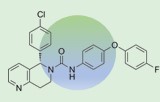Luteinizing hormone (LH) is a crucial glycoprotein hormone produced by the anterior pituitary gland in vertebrates, playing an essential role in regulating reproductive functions. LH is part of the gonadotropin family, which also includes follicle-stimulating hormone (FSH). This hormone is pivotal in both male and female reproductive systems, influencing processes such as ovulation, testosterone production, and the overall functioning of the gonads. Understanding LH's mechanisms and effects across various species provides valuable insights into reproductive biology and potential applications in agriculture and medicine.
Key Functions and Mechanisms:
-
Ovulation Induction: In females, a surge in LH levels triggers ovulation, leading to the release of mature eggs from the ovaries. This process is critical for successful reproduction in many vertebrates, including mammals, birds, and reptiles.
- Testosterone Production: In males, LH stimulates Leydig cells in the testes to produce testosterone, which is vital for spermatogenesis and the development of secondary sexual characteristics.
- Hormonal Interactions: LH works synergistically with FSH to regulate gonadal function. While FSH promotes follicle maturation in females and spermatogenesis in males, LH ensures ovulation and testosterone production.
Research Applications and Clinical Significance:
-
Fertility Studies: Measuring LH levels is crucial for diagnosing reproductive disorders and assessing fertility in both human and veterinary medicine.
- Aquaculture and Agriculture: Understanding LH's role in fish reproduction can enhance breeding programs and improve yield in aquaculture.
- Endocrine Disruptors: Research into how environmental factors affect LH secretion can help identify potential endocrine disruptors impacting wildlife and human health.


